©ourtesy of guildhall / renamok / mekhismind
Chantal Regnault’s Ballroom Portraits
The French-Haitian photographer who captured the 1990s vogue scene in New York. Chantal Regnault is the photographer behind the images in Voguing and the Ballroom Scene of New York 1989-1992, a new publication by Soul Jazz Records. She talks about her days behind the lens alongside some of Harlem’s most vibrant performers. Her story was told to Rosie Swash.

Generous scoring by the judges at the Tanqueray Ball Aids Benefit, 1990 Photograph: Chantal Regnault/Courtesy of Soul Jazz Books/PR
Tell us about yourself:
I’m Chantal Regnault. I was born in France and settled in New York in 1971. It’s still my base 40 years later, even though I moved to Port-au-Prince in Haiti in 1994 and kept residence there until the January 2010 earthquake kicked me back to New York. I was among the lucky ones who only lost their home and still had a place to go. Literature was my academic background, but wild 1970s New York triggered the switch to photography: the energy on the streets, the people, their diversity, their free style and originality were particularly inspirational. As the city seemed to be on the brink of financial and physical collapse (Abe Beam used to say “I am the Mayor of 10,000 potholes”), the art scene was booming. Hip-hop culture was in the making, street style lead fashion, there was break-dancing and graffiti, first on walls and trains and eventually in art galleries. That’s what got me started and I documented emerging urban subcultures for many years.
How did find out about and come to photograph voguing?
In 1988 the Village Voice published a couple of breaking articles, Venus Envy by Donald Suggs and The world According to Vogue by Scott Poulson Bryant. Both were a great introduction to the black and Latino gay ballroom circuit, out of which come a new style of club dancing called voguing, which was spotted in 1989 and 1990, when iconic performers such as Malcolm Mclaren, Blondie and Madonna brought it into the mainstream spotlight. Even more intriguing was the network of “houses” who were competing at the balls. They were both surrogate families for gay kids who had been kicked out by their biological families, and gatherings of talented indivduals geared towards fashion, style and glamour, mirroring the great houses of couture. These places were a haven of tolerance, freedom and self-expression for an expanding rainbow of sexual identities. I was soon able to track the next function, as a house ball was called. And once you got to one, you were informed on the spot of when and where the next one would take place. Back then there were six main houses and a dozen emerging houses, and each would throw one ball a year, sometimes two…
Tell me a bit more about the scene:
Well, the balls were fun and beautiful, and the photographer was appreciated as part of the fashion scene- no fame without photos- and a testimony of appreciation for all the beauty and inventiveness deployed. This made the work much easier and pleasant, naturally. From glamorous femme queens and butch queens walking the runway like couture divas, to humorous butch queens in drag and athletic young voguers, you needed more than two eyes to frame everybody. And the ambiance, the laughs, the dramas, the theatrics, the pounding house music; it was the most exciting way to spend a night in New York back then.
Tell me a bit about New York between 1989-92:
Voguing originated in Harlem all the way back in the 1920s. They were called pageants back then and were attended exclusively by drag queens (as they were called then), before the scene evolved into black and Hispanic gay fashion houses in the late 60s and early 70s. The scene progressively opened to other gay genders such as butch queens, (male looking gay man), butches (male looking females at all stage of transformation) and even straight men and women. I caught up with it when voguing had made it to the downtown gay clubs like Better days, Latin Quarter and Paradise Garage, and when the houses started to hold their yearly balls in spaces rented midtown and downtown. Midtown not far from the Times Square bars (Sally’s Hideway, Edelweiss, Escualita) where the working girls and their costumers used to hang out. Downtown, not far from the West Village, had been the glorious theater of gay liberation since the 60s.
In fact, the Ball phenomena kind of revived New York nightlife, which had shrunk drastically as the first wave of AIDS related sicknessses were decimating the community. The Queens became the stars of the straight New York clubs, and began to be recognized, appreciated and photographed. They appeared on TV shows and were interviewed by TV icons. The voguers also became a big attraction and soon everybody wanted to emulate their dancing style. Two figures were instrumental in launching the trend in the awakened downtown clubs: Susanne Bartsch and Chichi Valenti, two straight white females who both had a knack for the new and fabulous and a big social network.
Why 1989-1992? What happened next?
1989-1992 was the peak of creativity and popularity for the ballroom scene, and when the mainstream attention faded away, the original black and Latino gay ballroom culture didn’t die. On the contrary, it became a national phenomena as Houses started to have “chapters” all over the big cities of the United States. But I was not a direct witness to most of it as I moved to Haiti in 1993.
Are you in contact with any of the people you photographed? Do you know what became of them?
Spending most of my time in Haiti for the next 16 years I had lost contact with most of them until 2005. Then came the book project over a year ago. Thanks to the internet and Facebook I was able to hook back into the milieu rather rapidly. First, I discovered that two thirds of the people I had photographed had been taken away by the plague (AIDS). It’s really tragic. The survivors are the ones who were able to catch up in time with new treatments allowing them to lead near normal lives. Most of my veterans are in their 40s and 50s, they hold regular jobs, go to clubs in moderation, but don’t participate in balls anymore, unless they are invited to grace a function with their “legendary legends” status. Lots of queens have died, but others went to have sex changes and are integrated professionally and socially in the wider world. I was able to conduct interviews for the book with nine emblematic figures of the Ballroom scene back then.
What is your favorite memory of this period?
I loved to get there before the show had started when everybody was getting ready, putting clothes and make up on It was a backstage ambiance with all the wise cracks, giggles, excitement and anticipation. I loved it when the contestants didn’t agree with the judges and the tongues became sharper, and when the show was over and the participants were going home, one by one with their trophies. Sometimes brawls erupted when a queen would discover somebody had made it away with her mink coat, her expensive handbag or shoes. That’s when the sweetest girls would turn into fierce street fighters. A reminder that you were in for some surprises if you were to f*** with them.
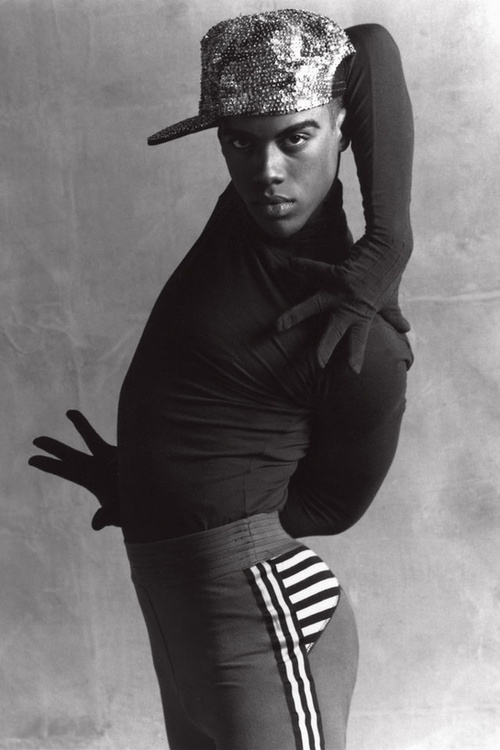 – In pictures: Voguing and the House Ballroom Scene
– In pictures: Voguing and the House Ballroom Scene
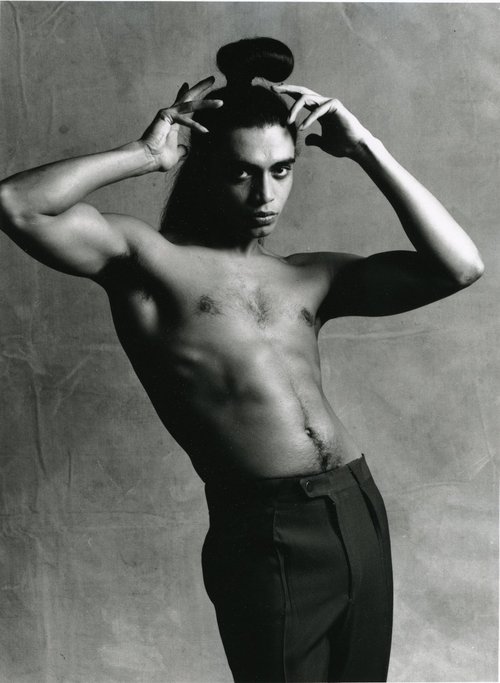 – Voguing and the House Ballroom Scene of New York City 1989-92, is out now from Soul Jazz Records There will also be an accompanying CD out in January 2012
– Voguing and the House Ballroom Scene of New York City 1989-92, is out now from Soul Jazz Records There will also be an accompanying CD out in January 2012


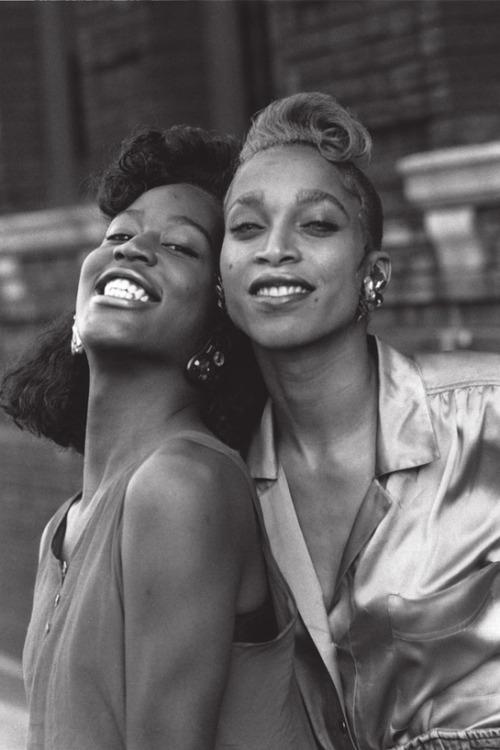
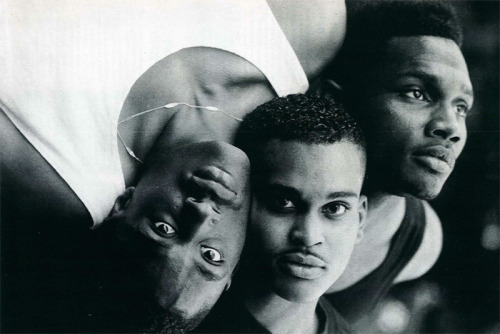
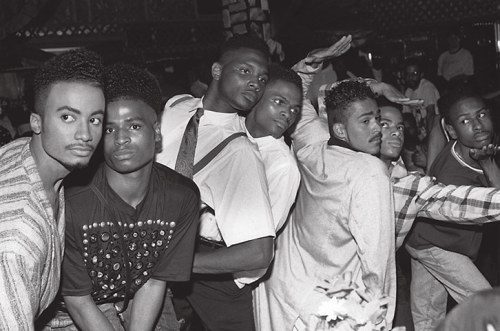
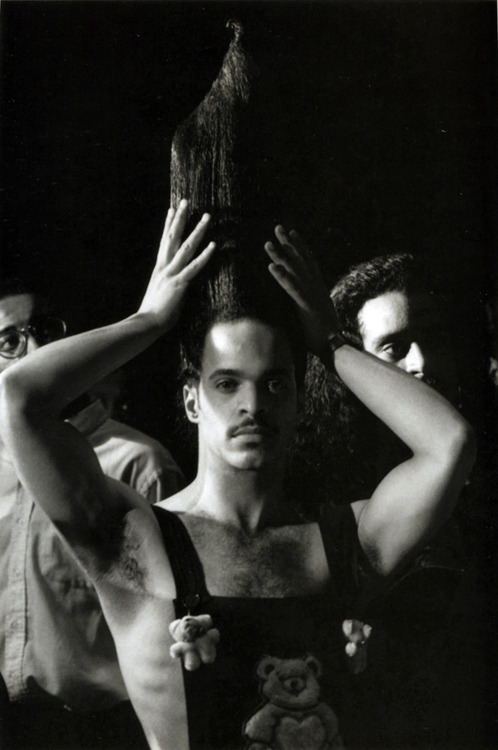
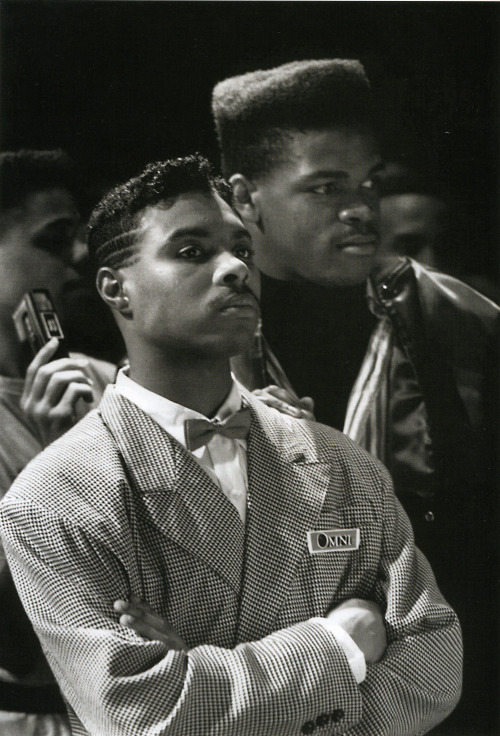
Fascinating! Thanks for sharing!!
LikeLike